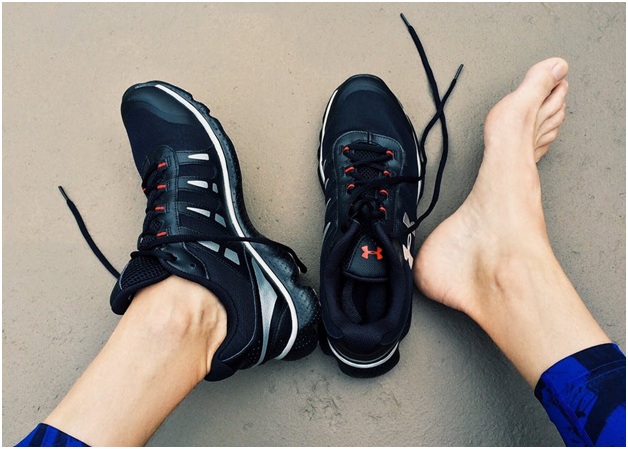
5 Ways Plantar Fasciitis Can Be Treated
There is a band of tissues running along the length of your foot, beneath the sole, connecting the toes with the heel bone. This band of tissues is known as the plantar fascia.
The plantar fascia can become inflamed after excessive and repetitive injuries that put a strain on the tissues and ligaments beneath the sole of your foot. When the plantar fascia becomes inflamed, the condition is known as Plantar Fasciitis.
The Causes
Plantar fasciitis is caused by strenuous injuries due to excessive walking, running, or jumping. The use of inappropriate footwear adds to these injuries. The condition can also be a result of musculoskeletal diseases, including ankylosing spondylitis and reactive arthritis.
A stabbing pain can easily identify the inflammation in your plantar fascia at the bottom of your foot right adjacent to your heal. The pain is sharp when you wake up but gets better as you continue with your day.
However, it often returns after you’ve been standing or sitting for a prolonged period. You may also experience excruciating pain after the exercise.
There are a multitude of ways to address plantar fasciitis and to make the pain more manageable. Some of these can be done at home. These remedies include ice application, some stretches and exercises, massage, anti-inflammatory medicines, and a lot of rest.
Surgical procedures include:
Steroid Injections
Steroid injections can provide instant pain relief for plantar fasciitis. However, certain steroid injections aren’t recommended as they weaken the band of tissues that may cause it to rupture.
PRP Injections
While steroid injections aren’t the best option, PRP injections may effectively help with the treatment of plantar fasciitis. Platelet-rich plasma reduces heel pain and helps with the functional restoration of the plantar fascia.
(Add image attribution)
Night Splints
Night splints are used in the early stages of the plantar fasciitis when the pain is manageable. They can be worn while sleeping so that the arch of your foot does not contract overnight and is relatively less painful when you wake up.
Shoe Inserts
Shoe inserts allow you to continue with your daily activities as per your routine without experiencing any pain. There are different kinds of shoe inserts available that include arch supports, custom orthotics, and gel inserts.
Extracorporeal Shock Wave Therapy
Extracorporeal shock wave therapy uses energy pulses that cause microtrauma in the tissues of the plantar fascia. This therapy starts the natural repair process from within the body. ESWT is only recommended to patients of the plantar fasciitis who have experienced little success from all the above treatments.
If you’re looking for an expert opinion from a podiatric for your plantar fasciitis injuries in Miami, you can get in touch with us at Foot & Ankle Institute Miami Beach.
We provide effective treatments for fungal infections, ingrown nails, heel pain, warts, and painful foot and ankle deformities that arise from lower spine, knees or hips.
